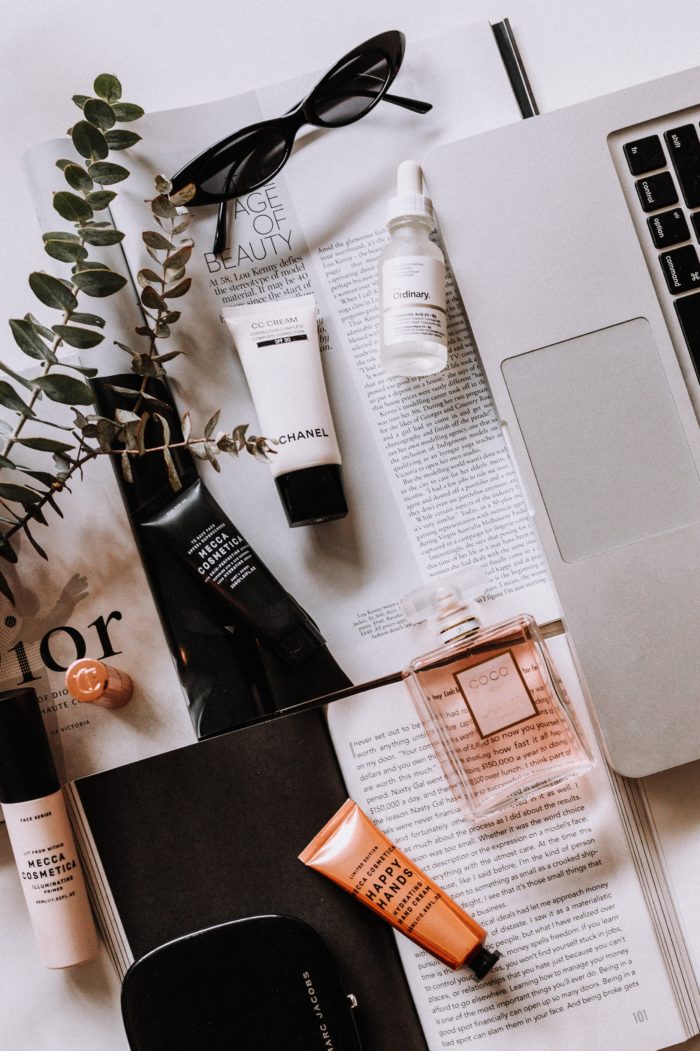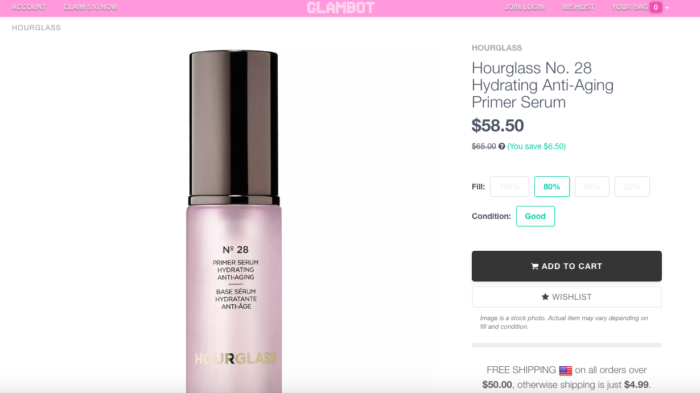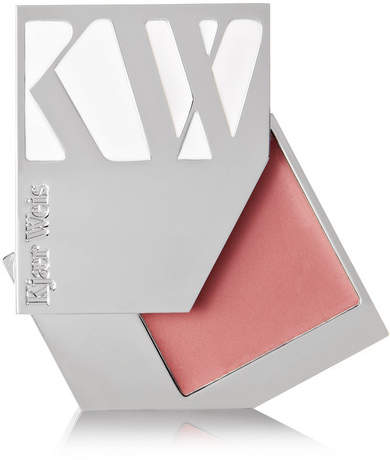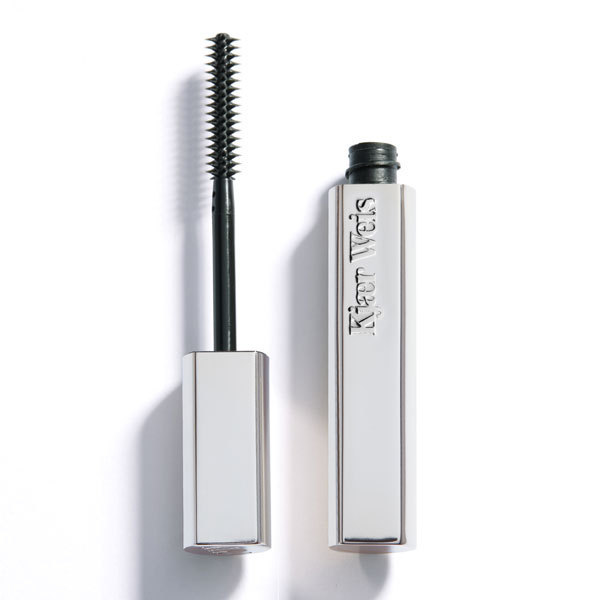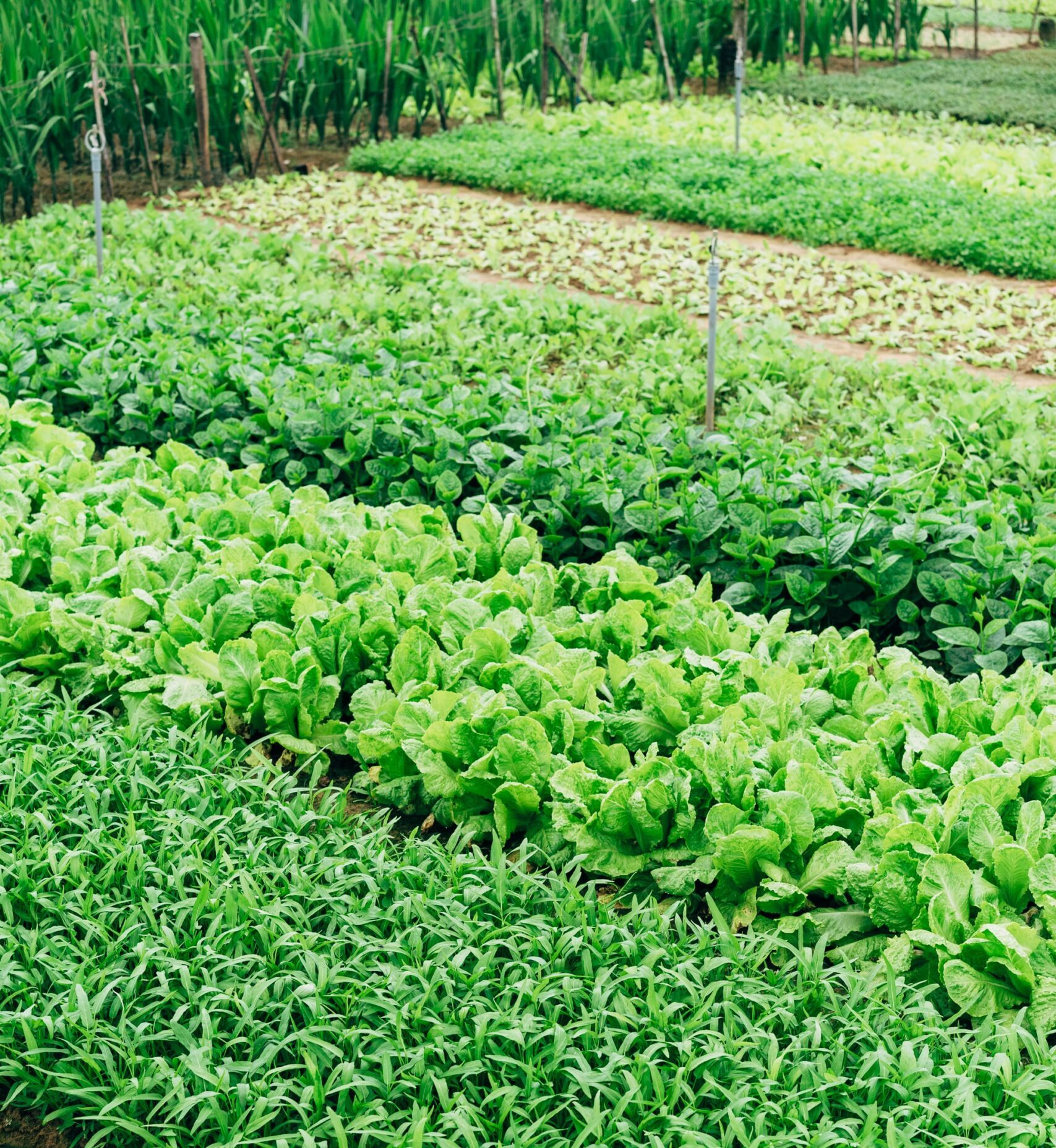The un-pretty truth about beauty packaging…
Most people transition to a sustainable lifestyle one area at a time. For me, it began with a vegan diet, followed by composting, sustainable fashion, reducing plastic waste, eating organic, sustainable furniture, and going fully solar-powered (!!!)—in that order. But one thing that is still difficult for me to eliminate is this: beauty packaging waste. While my skincare and makeup are all cruelty-free and “natural”—a term that’s not defined by any governing body, by the way—they’re still mostly contained in bottles and tubes that end up in landfill. This might sound like a small matter compared to all the rest of evils in the world, but 120 billion units of packaging are produced by the cosmetic industry each year. Most of these eventually end up in the landfill or the oceans.
In an ideal world, I would have sultry lashes without a stitch of mascara, and lustrous skin that begs to be left uncovered. But as earth-loving as I am, I would lose some of my mojo without the products that make me feel pretty. (“That’s the human in me,” as Lizzo would sing.) At the same time, it does leave a bad taste in my mouth when I have to throw out a tube of mascara or foundation. Even before China stopped importing our plastic waste, I had my doubts whether these small pieces of plastic were really being thoroughly washed, separated, and melted into something new. These days, many municipalities in the U.S. have stopped collecting plastic separately all together: even in crunchy Portland, Oregon, my heart drops 10 feet into the ground every time I have to throw out a tofu container. (More on that later.)
Fortunately, there are a few new alternatives for those of us who’re passionate about both beauty and environment. Let’s dive in.
Buying Secondhand Makeup
As much as I love buying secondhand clothes and furniture, this one threw me in for a loop. But there is a growing market for selling and buying secondhand makeup: it’s a serious trend among Japanese Millennials, and in the U.S. there are sites like Glambot, Poshmark, and MUABS. At Poshmark, the pre-owned product has to be never-used, while at Glambot, there has to be at least 50% of the product left. Purely for investigative-journalism reasons, I did a search on Glambot for products that I could conceive myself buying.
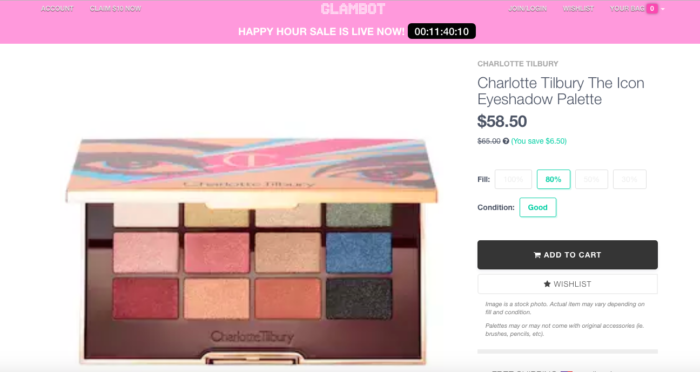 This Charlotte Tilbury eyeshadow palette with 12 shades is $58.50 with a discount of $6.50.
This Charlotte Tilbury eyeshadow palette with 12 shades is $58.50 with a discount of $6.50.
I’m a big fan of Hourglass, a luxe cruelty-free line that makes my go-to foundation (Hyaluronic Tint). This primer serum piques my interest because painting my face green and purple just to get a flawless base is just too much for my lifestyle, and yet the idea of a serum-primer seems a lot more doable. This would also save $6.50—nice.
My feeling is that sites like Glambot might work well if you’re doing a re-buy of your favorite products. That way you won’t end up wanting to return the product, which will defeat the sustainability purpose. Or, you may want to try it to buy colors that you know you won’t use all the way to the pan, like a trendy eyeshadow, glitters and shimmers, and slightly more risqué lip colors. You have less risk of contamination from products that are pumped or squeezed out of a bottle. Meanwhile, you can clean the surface area of color products like lipsticks with an alcohol wipe. The riskiest products to buy secondhand are things like mascara, eyeliner, and lip gloss. With these, I would just stick to new.
Refillable Packaging
This has been a quietly growing movement, and there are many luxurious options for beauty mavens wary of plastic waste. One of my favorites is Kjaer Weiss, who makes refillable cream blush, lip colors, eyeshadows, concealers, and even mascara. RMS Beauty, Ilia, and Alima Pure are other cult-favorite brands to try. Disclaimer: many people find it challenging to actually use the product all the way through in order to be motivated to replace it with another tin. I’m currently about 90% through with the Kjaer Weiss cream blush and intend on replacing it, maybe with another color to spice it up or just with the same shade, Blossoming.
Kjaer Weiss Blush in Blossoming
This refillable mascara is a favorite of our beauty editor Mary, because it won’t weigh down your curled lashes.
Refillable perfume is gaining some steam as well in recent years. Angel by Thierry Mugler started its perfume fountain more than 20 years ago, which was largely ignored by its competitors. But lately, brands like LVMH, Guerlain, and Chanel have also jumped on board, noticing a shift in the consumer preference for sustainability and authenticity. Note that these brands are not cruelty-free or vegan. Having an easily accessible, brick-and-mortar location for fragrance refill is largely out of reach of indie vegan brands. But that this option does exist makes me sleep a little better at night, because chucking a gorgeous glass bottle of your favorite perfume just feels so wrong on many levels.
Trading Makeup and Skincare with Your Friends
Do you have a color you don’t care for anymore, but would look fantastic on a friend? Your shampoo just not quite right for your hair type? Make it a habit to trade and gift unused products to your friends and family. One of the most delightful gifts I’ve ever received was when Mary sent me her flat iron because I was loath to go out there and buy one wrapped in plastic. Friends save friends from packaging waste.
Buy What You Know You’ll Use
This doesn’t just apply to beauty, but everything in our lives. We must stop buying things for fun or just because—every single product we make and consume has an effect on our planet. If you’re on the fence about a color or a formula, don’t buy it. If you’re still thinking about it days later, try it at the store before making a purchase. And, use the makeup you have first. I still have an almost-new shade of bordeaux lip gloss that is begging to be experimented with—or at least, gifted.
How do you try to reduce your beauty packaging waste?
__
Photo: Trent Szmolnik on Unsplash

